This week I did another Canon 5dMkII shoot. It was for a client of mine , Russian Hour , whom I went to Siberia with three times last year. You can see a couple of the shorts I shot out there here and here. It was to film famous Russian actor Boris Burlyaev read the poems of Dmitry Mizgulin. The location was Chiswick, West London, at the Russian Orthodox Church.
Originally it was going to be an EX3/ Relay/ Letus Ultimate Shoot but the plan was to use lots of candlelight so that meant that it was not going to work. That’s a pretty good low light combination, adaptor wise, but not sensitive enough for what I needed. So it was the 5dmkII again with it’s astonishing low light capabilities. Down side was recording sound separately and having to convert to 25p in post. But there was little movement, all on tripod with dolly shots so the rolling shutter issues of the 5d would not cause a problem. As long as you are aware of the camera’s limitations you can get great stuff from it.
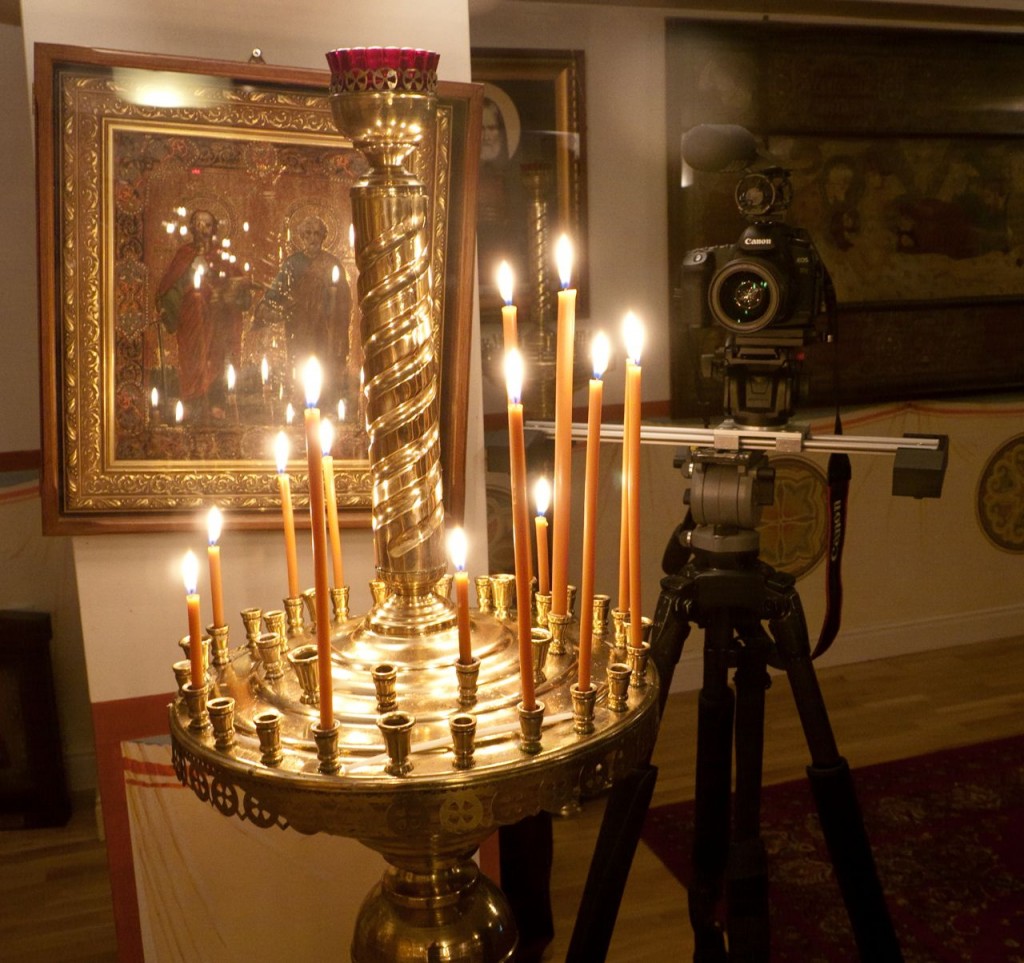 I also brought with me two new toys to try out with the 5d.
I also brought with me two new toys to try out with the 5d.
First off was the Glidetrack compact (turn your sound down when clicking on that link!), a great little device that gave me a really simple way of getting a simple dolly move without having to set up my whole dolly and track. It just went on top of my miller head and I fixed a manfrotto head from my monopod onto the top. I used it the first reading in the video below and in about 6 different shots in the finished film. It looks great, works really well and is incredibly light.
When I decided to go down the 5d route I asked for a proper sound recordist. Yes at a push I could do it myself as it’s just one speaker but this film was all about the beauty of Dmitry’s words so the sound needed to be incredible. So I got Alan Hill, a veteran of many drama and documentaries to record sound for me. He was brilliant. Everything sounded amazing in the end and he really had top of the line gear . He used one DPA 406 personal microphone on the actor and a 416 and a MKH30 mixed over the top to get a stereo atmosphere. The mixer was a sound devices 442 and the recorder a 744t. He recorded onto one of my CF cards and also onto the built in hard drive as a back up. I used a Rode VideoMic directional mic for the 5d or Gh1. I wanted good clean in camera audio for sync. It’s a good mic for general 5d atmos, but I also really like the power switch and light in my eye-line so I know it is working, especially with the terrible sound limitations with the Canon of knowing if any sound is being recorded.
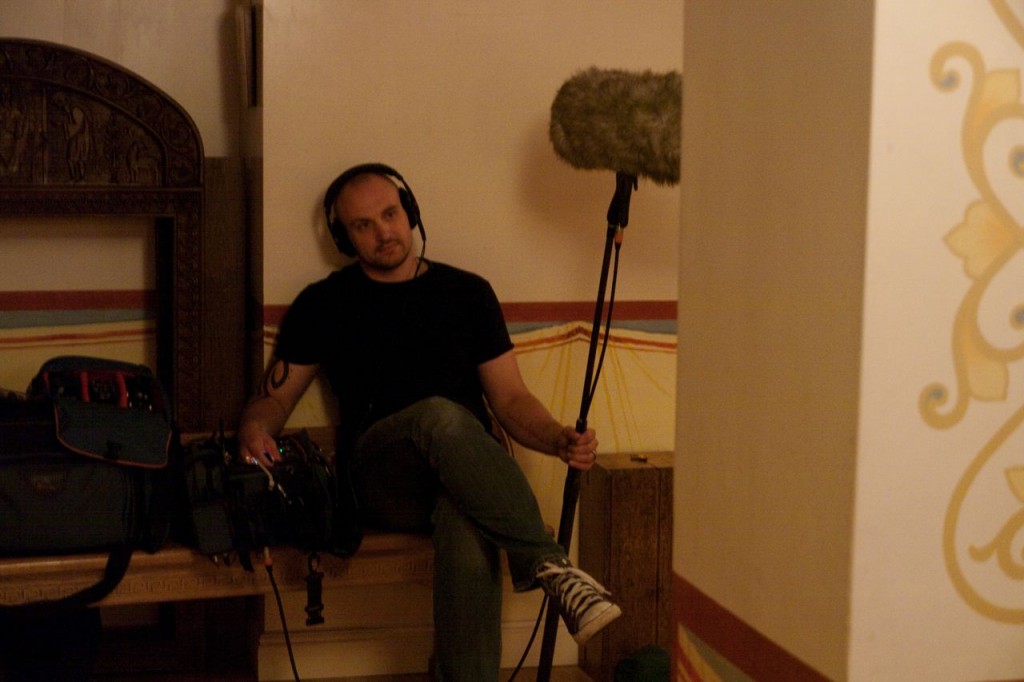
The crew was very small. I acted as DP and Director, Alan did Sound, Alexander Korobko was the producer and Edward McLeod-Jones ,whom I had never met, was my assistant. He responded to my twitter call for an assistant and he was superb. He acted as my AC and BTS photographer using a Lumix GH1. We used a good old fashioned clapperboard for sync and of course everything was labelled on the clapper with the correct scene and take which Alan labelled his files as to, which makes syncing them a breeze in post.
Obviously I could not label each take in camera, i just did it after offloading, taking it from the clapperboard.
Inside we had two main locations. The crypt and the main chapel. The crypt had no daylight and was lit mostly with candles. I did use one Dedo 150 to give me a splash of light on one wall but very faded down. There was some ambient lights on faders in the room, which I sometimes had one, sometimes turned off, depending on the shoot, but they gave a little extra fill at time when I needed it. I kept the balance to tungsten as I wanted it to look orange, like candlelight, not take it away.
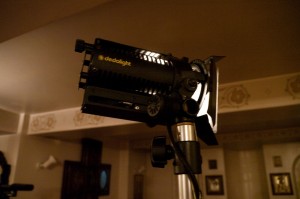 I used four lenses the entire time. The Canon 24mm f1.4, Canon 35mm f1.4 and Nikon mount Zeiss ZF 50mm and 85mm f1.4
I used four lenses the entire time. The Canon 24mm f1.4, Canon 35mm f1.4 and Nikon mount Zeiss ZF 50mm and 85mm f1.4
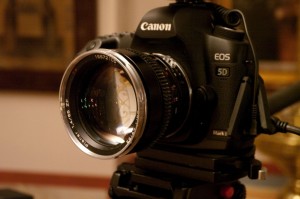
I had my MBP 13″ with me for offloading, using the lexar FW800 CF reader again. I did bring with the Small HD monitor but forgot to bring the mains. Whoops! Because the shots were mostly static or with small movement, I just used the LCD and zoomed in to pinpoint focus, occasionally I used the Z-Finder but didn’t need it as my eye didn’t need to be pressed up against it the whole time. I wish I had the monitor working for this shoot, would have been much easier.
Tripod wise I used my LOVELY Miller carbon fiber Solo with DS20 head, perfect for this set up, although the DS10 would be fine too. I loved how light, stable and how high and low this tripod can do.
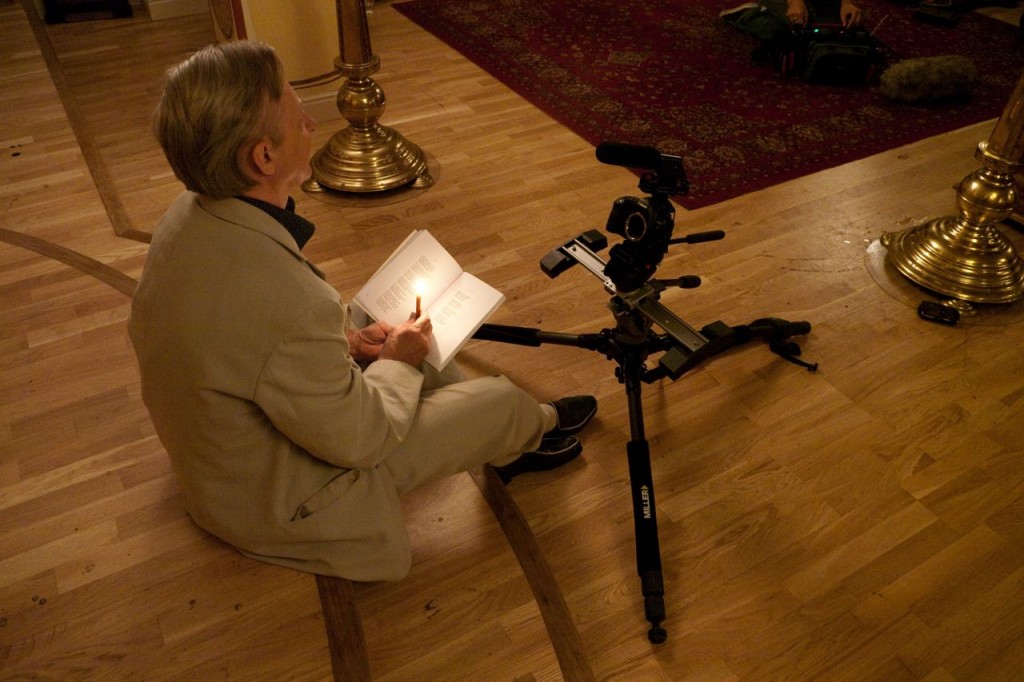
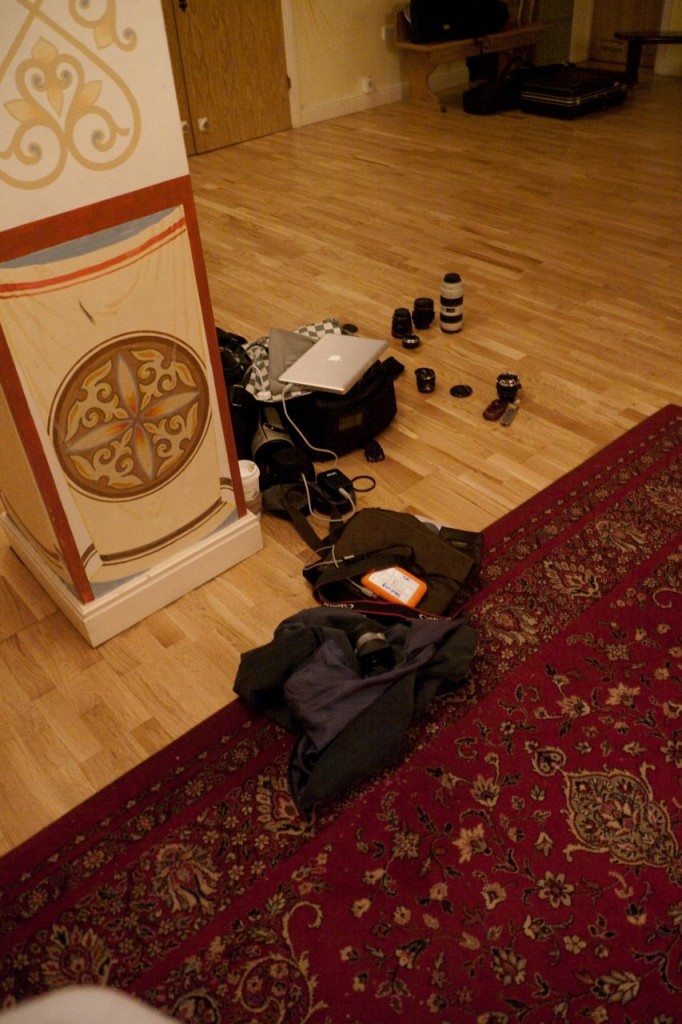
I had some issues during the shoot with noise at some low ISOs and I couldn’t for the life of me work it out. I reset all camera settings, took battery out and put back in and it seemed to be better. But I does seem that some intermediate ISOs create more noise than more traditional higher ISO numbers. I need to get to the bottom of this. In the end, everything I shot looked remarkably clean, even the stuff lit by just one candle with the dedo in the background. Incredibly dark. You have to be really careful with the metering on the camera, don’t trust it all the time. If I went with the metering guide and exposed on some of the candle stuff I would have lost all the ambience, so I kept it well under for the most part and it was beautiful. Don’t judge the image from this compressed vimeo version.
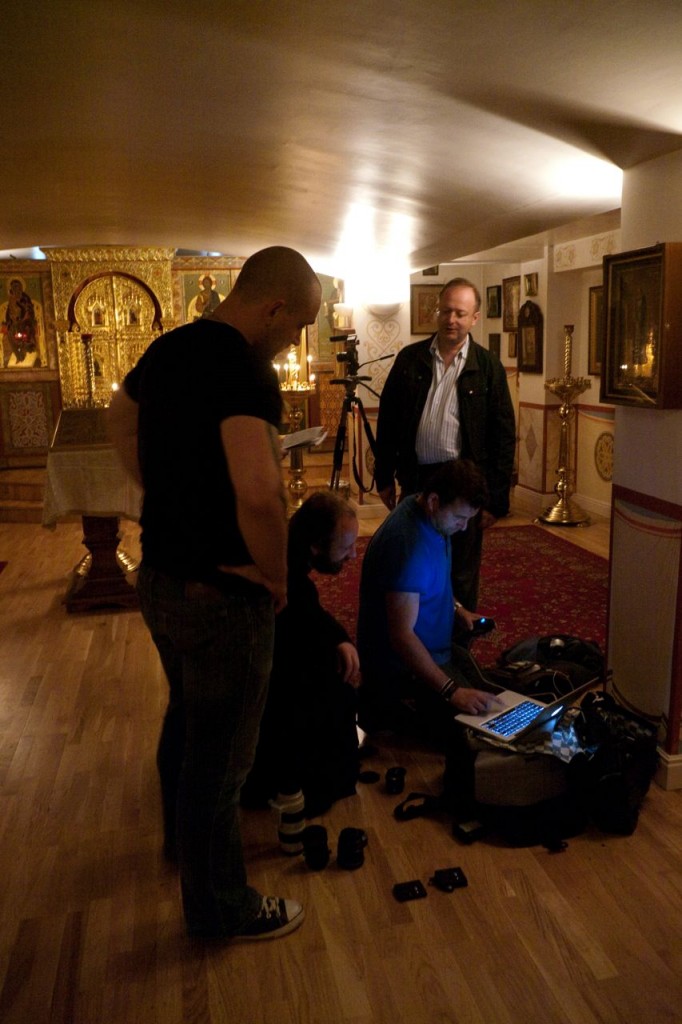
Upstairs in the chapel there were lots of windows but it was a really shitty day outside so very dark, but I made the most of this. I put up a single Kino Flow 4 bulb Diva, with three daylight bulbs in and and one tungsten, using the available window light as backlights, fill, ambience. I was able to keep a real atmosphere going.
On the second shot in the below video I used a Wally Dolly, a very lightweight and easy to set up self operated dolly and track system. I set the focus for the end point on the lens and marked it off on the track and simply slowly tracked in until I got Boris into the shallow DOF focus. I used the Zeiss 85mm for that shot.
The poems are mostly about the church but there were 5 which were secular so we did one against a very minimalist white wall and bench in the Church and the rest we filmed down down by the Thames. This is where the other cool toy I have came in handy. the Vari-ND and Fader ND, check out my last blog for my info on them but they gave me the ability to keep the shutter down to 1/60th for the entire shoot. With the 30fps 5d, try and keep shutter to 1/60th if you can for optimum film motion. Having the Vari-Nd on the front gives you almost a second iris control but just for ND, giving you the ability to stay at the f-stop you want for your depth of field of choice but not have to change shutter speed to bring down exposure.
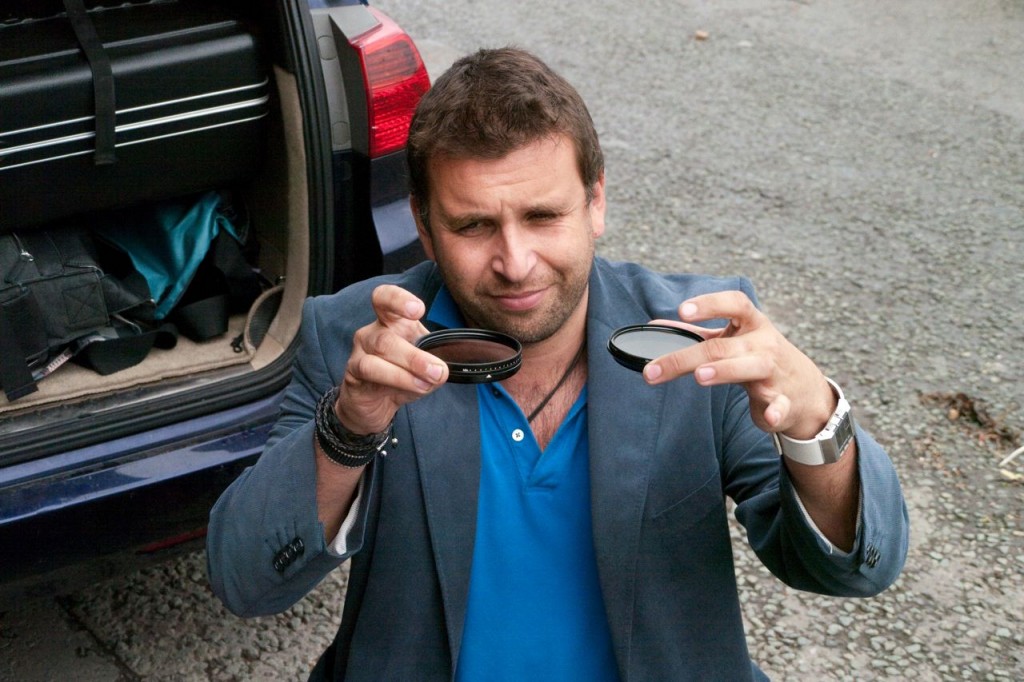
In the end i had about 15gbs of video and 1.2gb of sound. So just two cards used.
I put together a little edit for the client to have a look at some of the different shots. It makes no sense am sure, my Russian is not good, as it is mostly the first line from each of the 16 poems we filmed. So please, if you understand Russian, don’t complain to me that it doesn’t work, it’s not supposed to! It’s supposed to show the client a flavour of what to expect! Each poem was filmed in two different shots, a wider and a tight. Very simple, but it needed to be with 16 to get through in one day!
Once again, it was a pleasure shooting on this camera. Get round it’s flaws and you can create some lovely stuff. Just don’t expect it to be the perfect camera for every job. It’s great for some, not for others!
It is still at 30p and was graded with Magic Bullet Looks. Don’t forget you can get 20% off of Magic Bullet Looks at RedGiantSoftware.com by using the code Bloom20 at checkout.
So here below is the test edit of excerpts from the poems. Enjoy!
Want to learn how to create the film look? Click below.

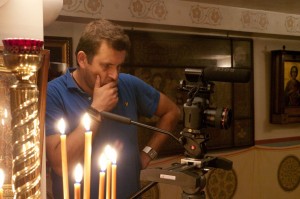
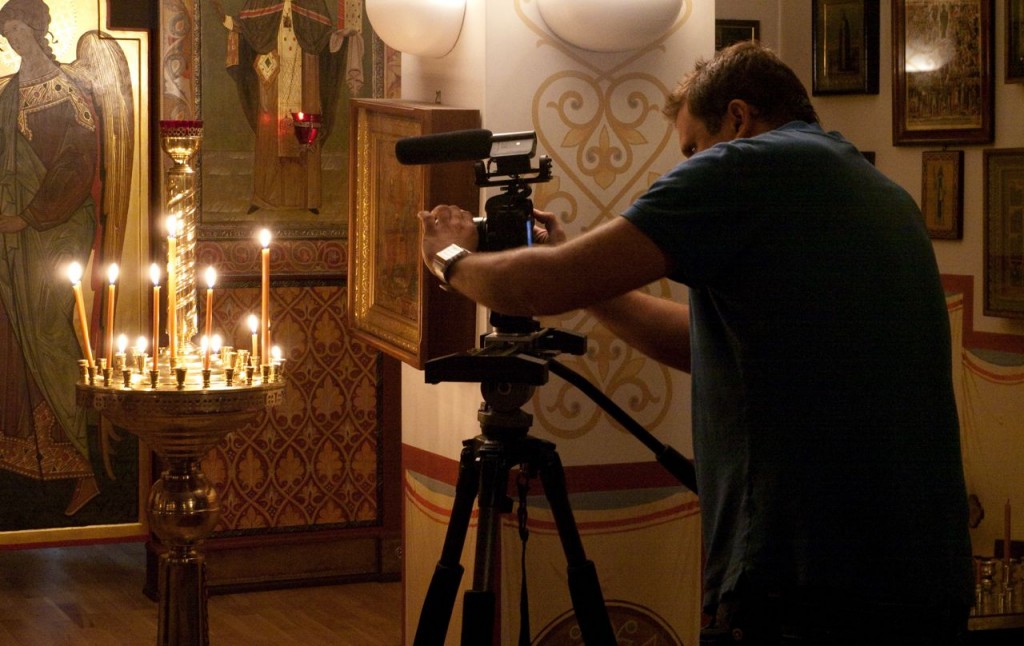
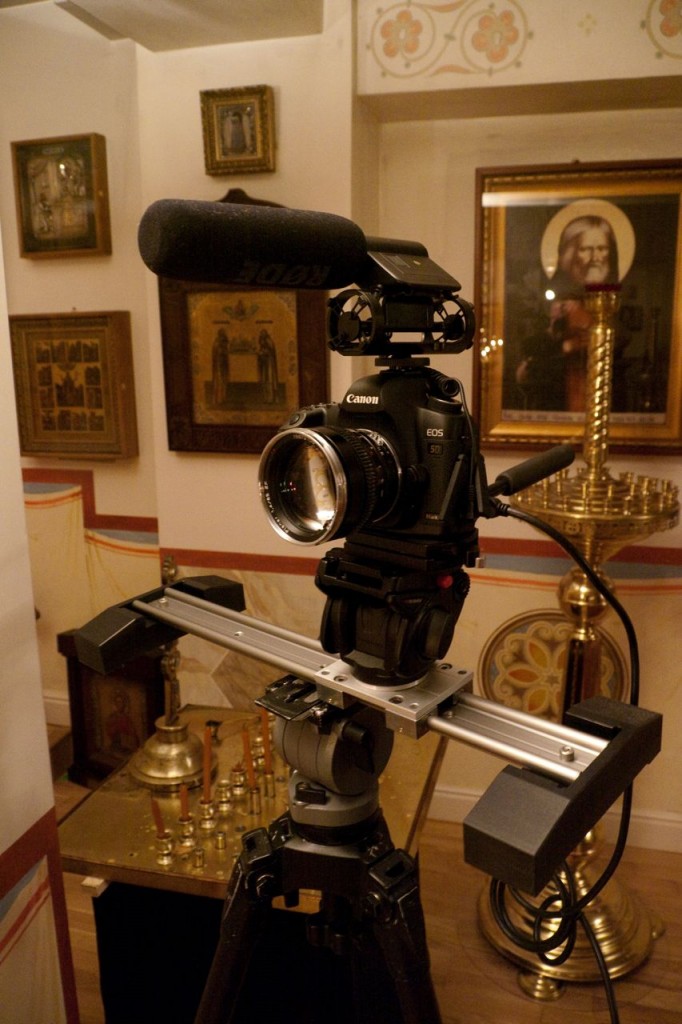
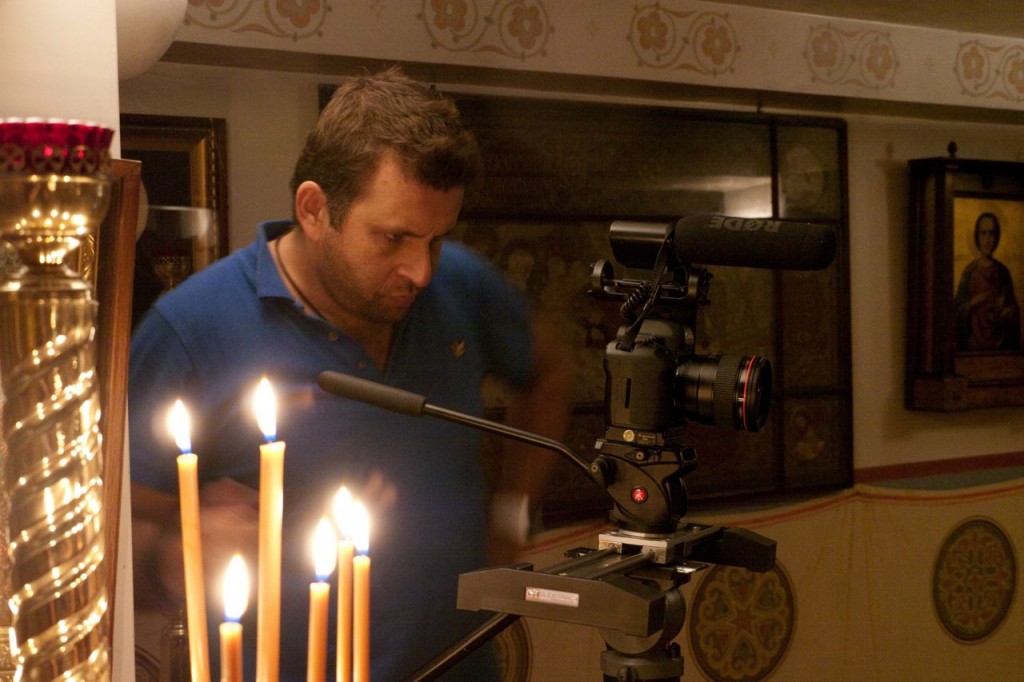
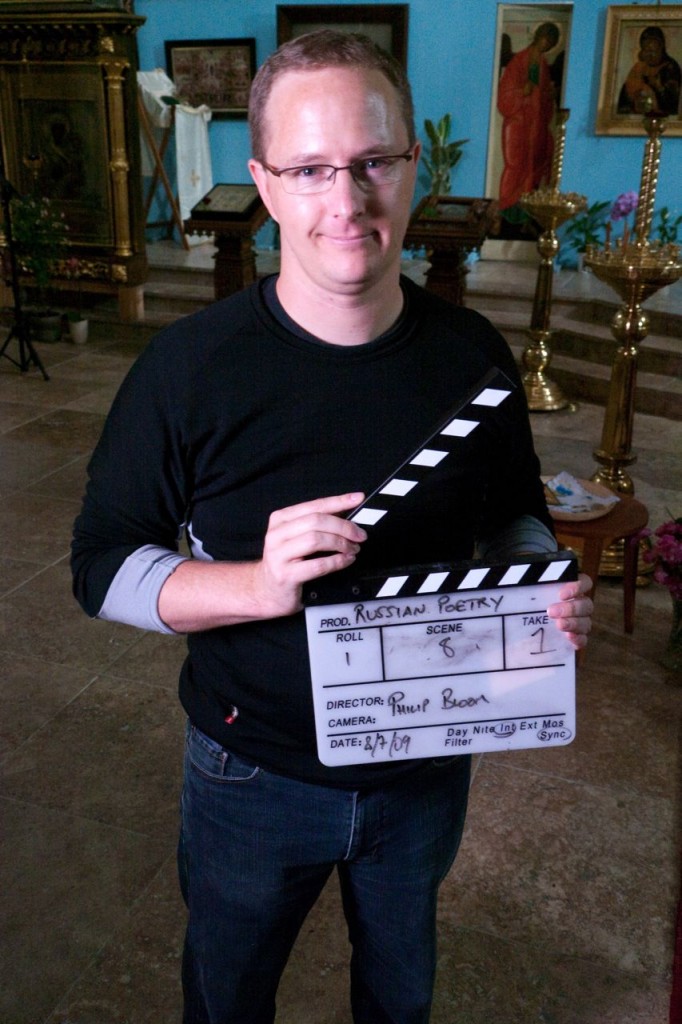
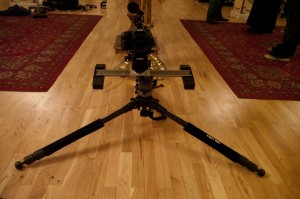
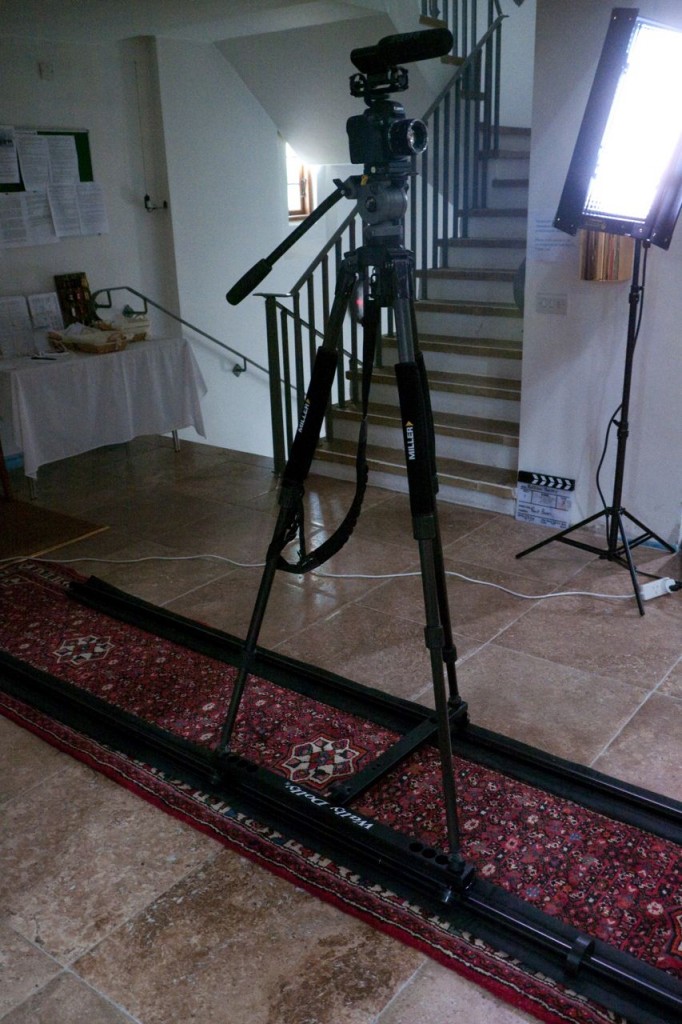
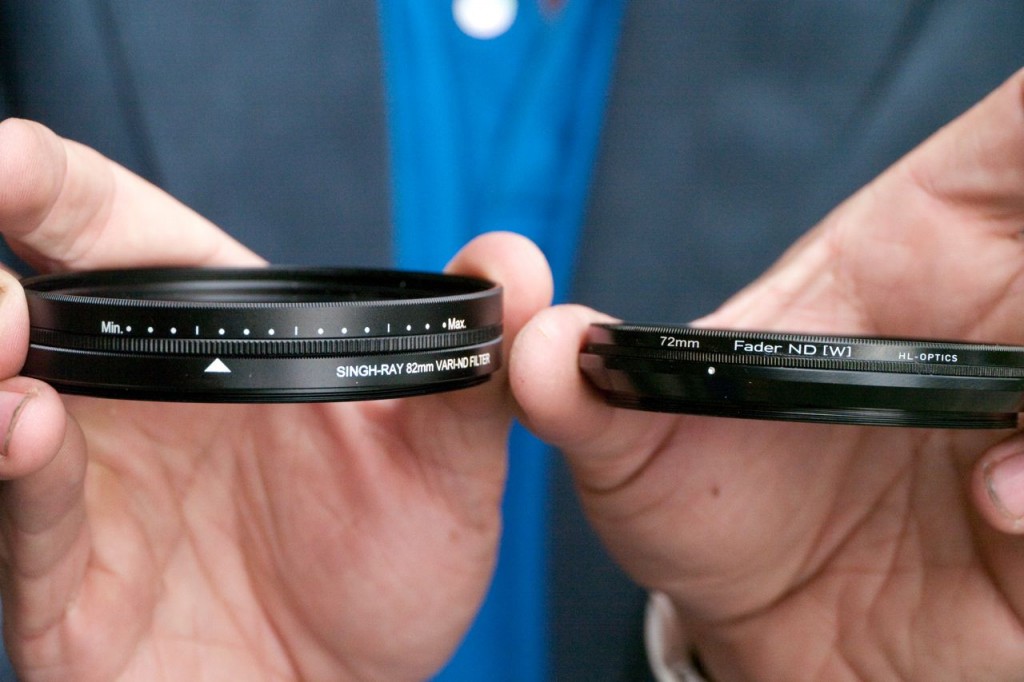
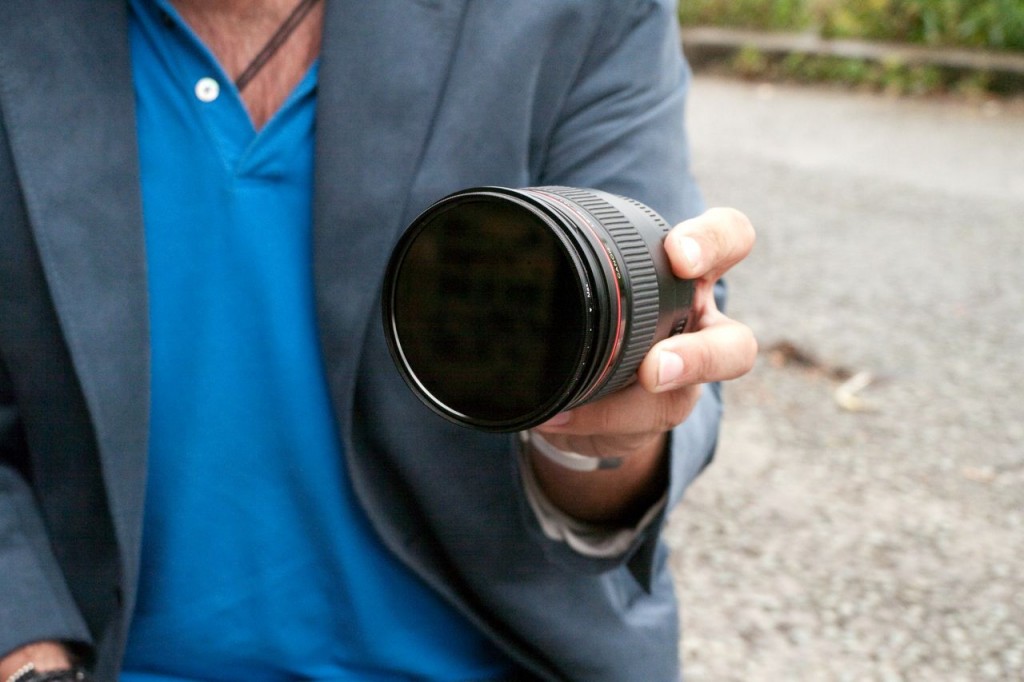
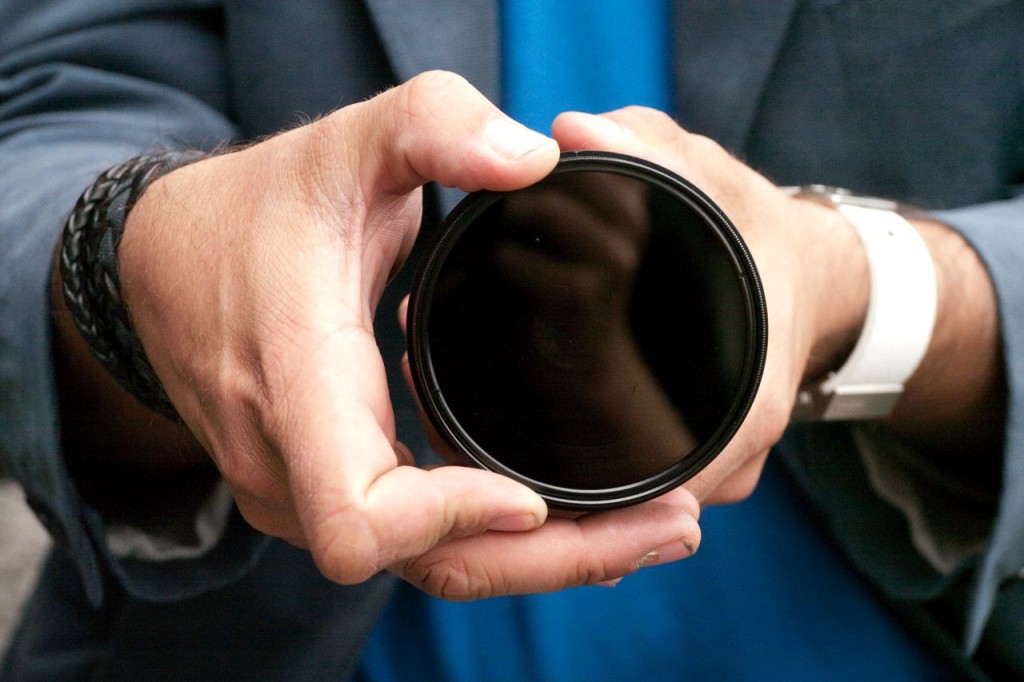
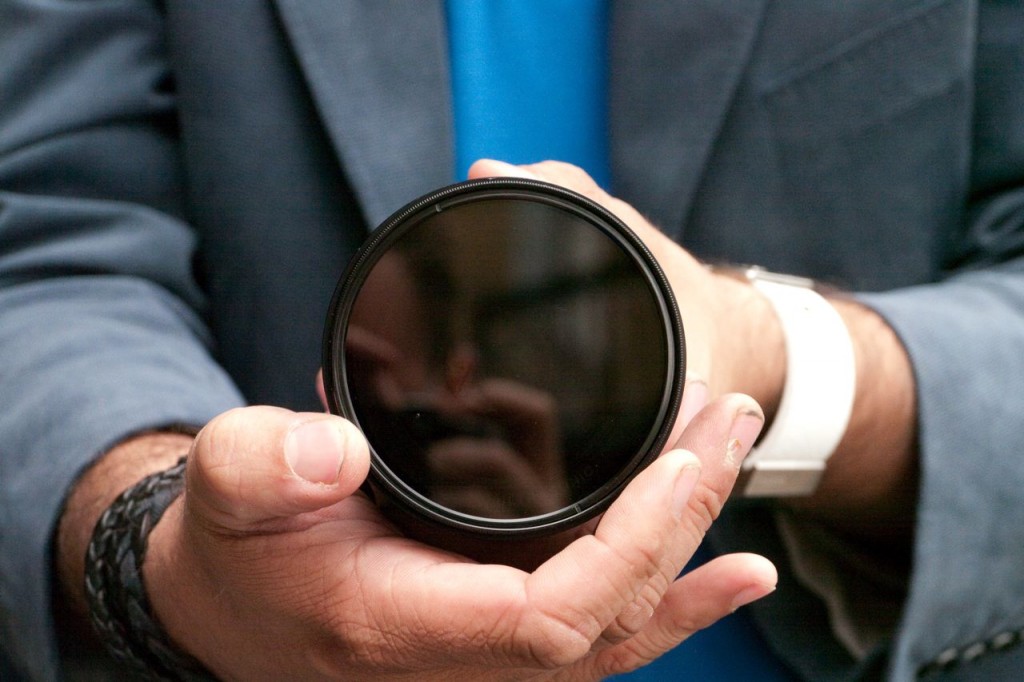
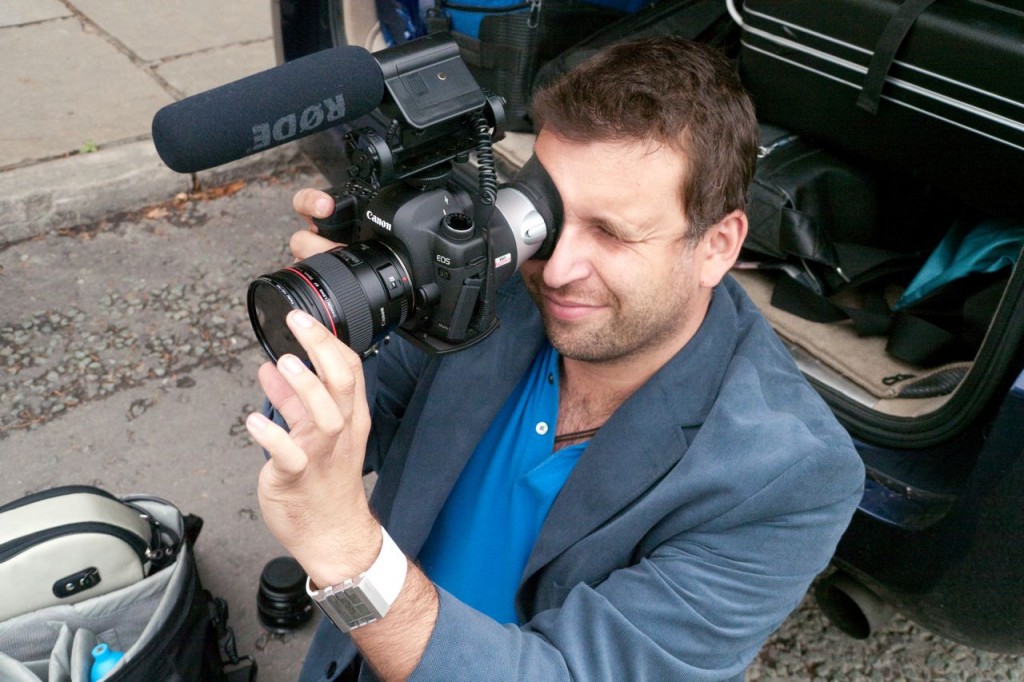
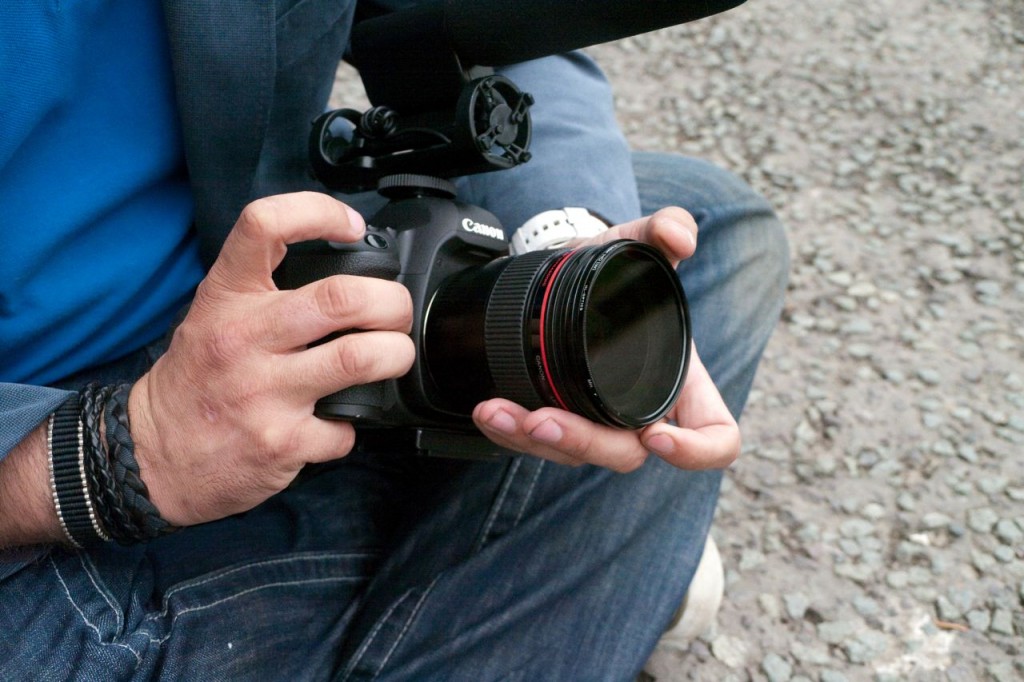
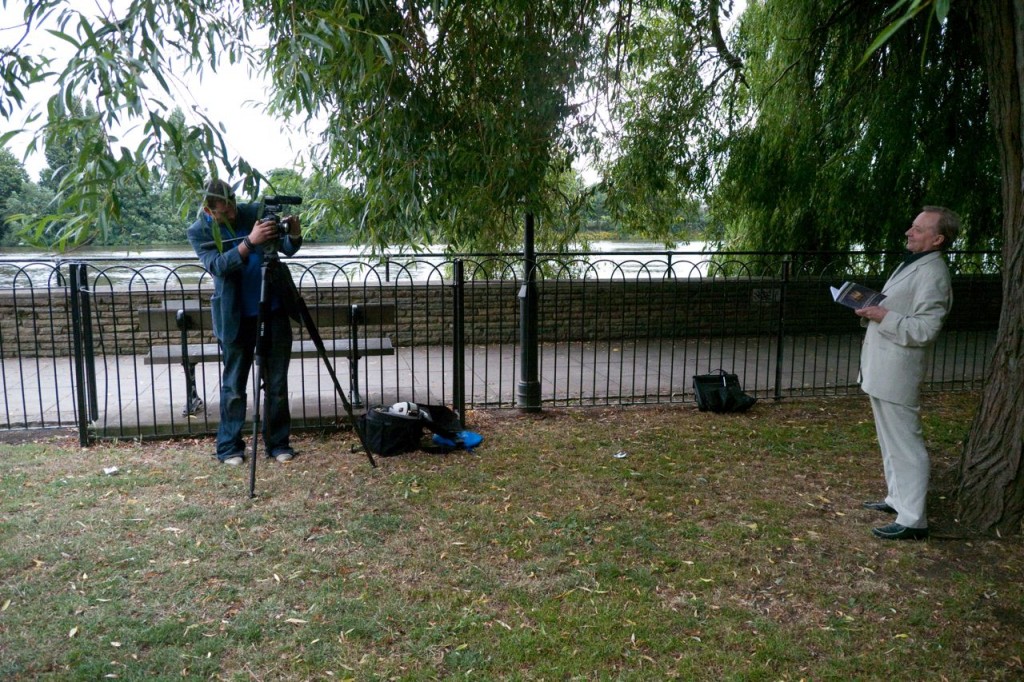

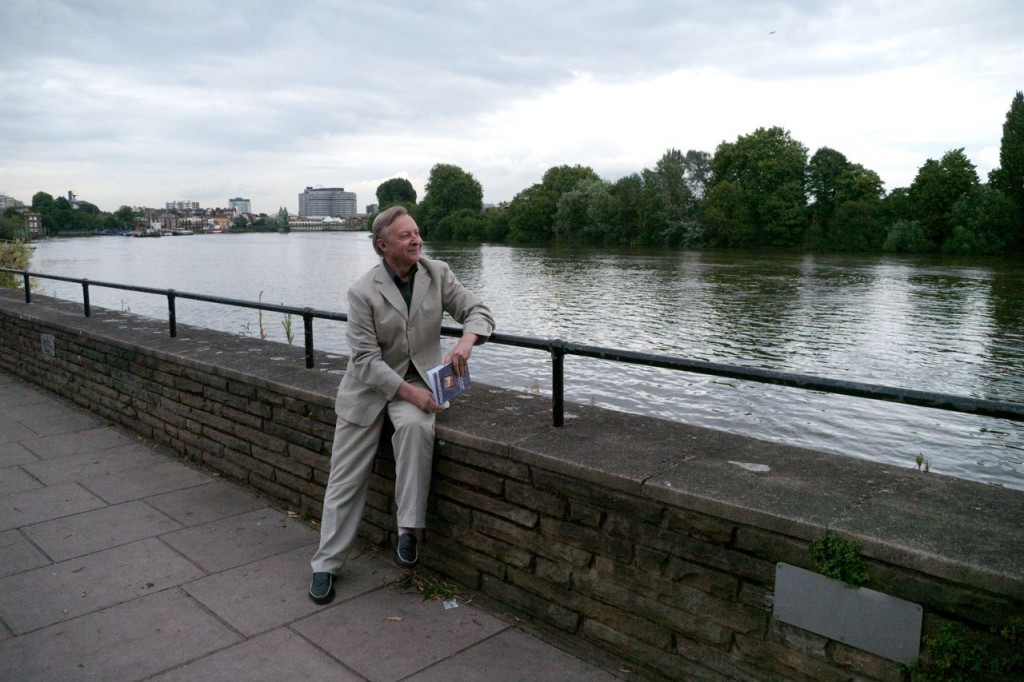
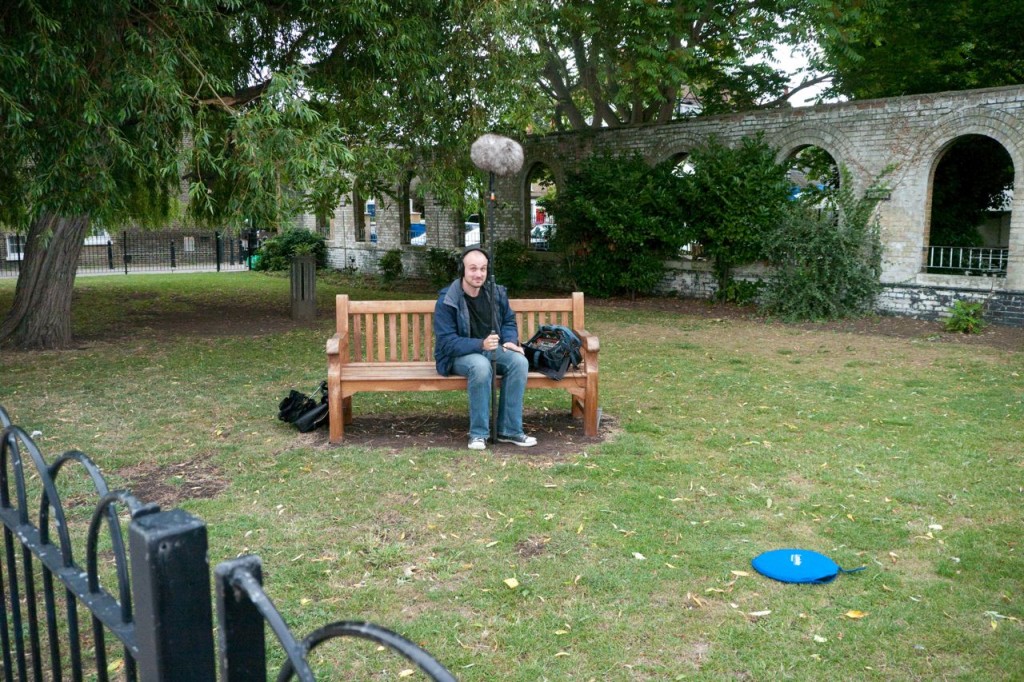
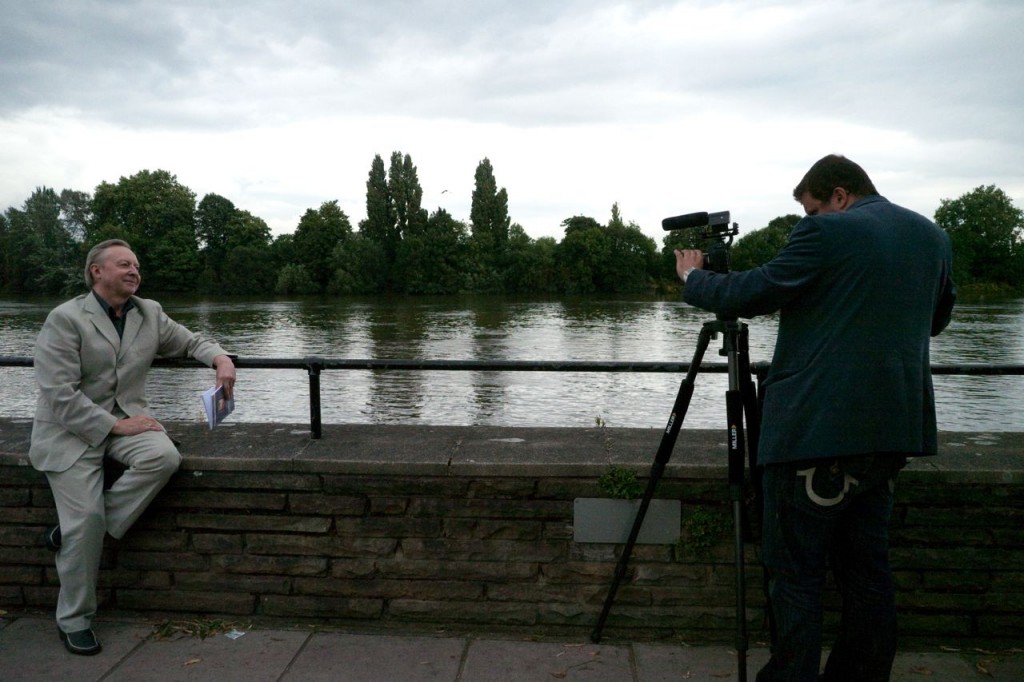
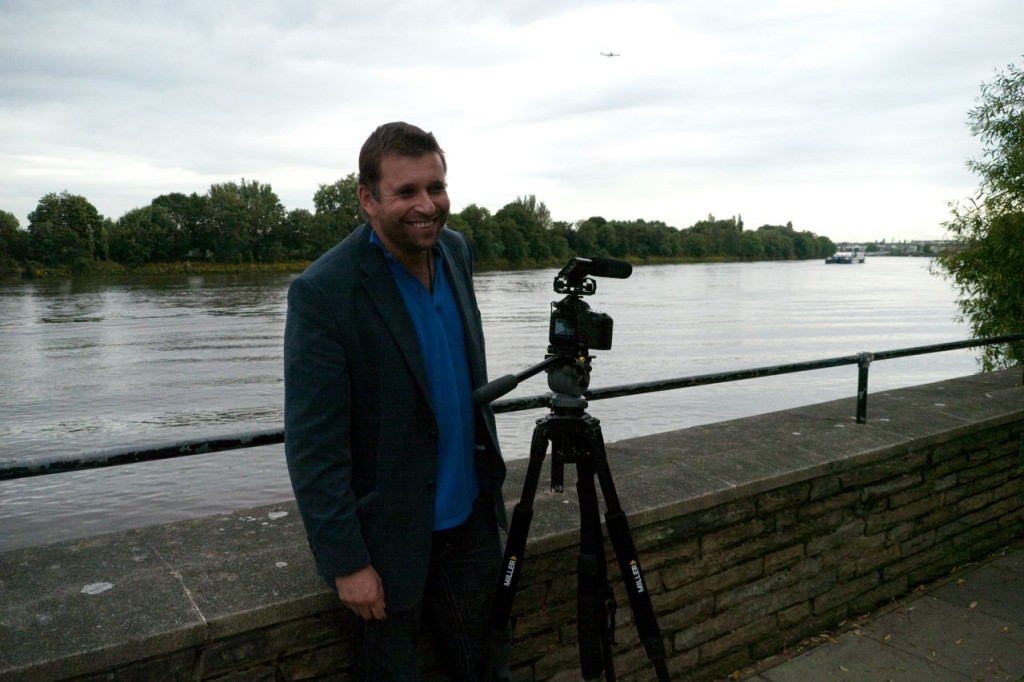

43 comments
zeiss primes and 744t ? Now i am jealous 😀
I have the bigger Glidetrack and am waiting for a reason to test is out. Maybe I’ll do a little test stuff next. The Gllidetrack gives so much Product Value for so little Money, it’s ridiculous. I never want to go out to shoot without. It gives such great filmic movements. I used my old cheap Tripod, ordered another one (roundabout 20Euro) and mounted the Glidetrack onto both. Now I can, due to the cheap 3-Way head, even do small crane-like shots. Next will be a Lens that’s a little faster than the f4 Kit Lens of the Gh1. Maybe the f2.8 one from Olympus.
the compact is perfect size and all you need most of the time!
Philip…you’re getting beautiful images out of the 5D… Very inspiring!
One question. Do you have an comments about the performance of the Vari-ND vs the Fader ND? How did the cheaper option stack up? Any verdict on these two filters?
Thanks for all the BTS information. Simply wonderful as always.
As to your noise problem I can offer a theory, but I don’t know exactly how it might apply to the 5D Mark 2. It is my understanding that ISO settings are achieved in a hybrid manner. The major (1-stop) settings are done by applying a voltage gain on the sensor readout while the intermediate settings (1/3rd stops) are mathematical interpolations of the gain. The difference is that there is an “analog” noise increase at the major stops and a somewhat sharper “digital” increase in the intermediate stops. Again, I don’t know the details of the camera (and I’m sure someone out there does) but that digital “gain” is how the “L” and “H1” and “H2” settings work: they are not changing the sensor gain voltage but just multiplying or dividing the resulting values by the requested factor.
Might help you, might not – but I thought it was worth sharing.
Thank you for all that you share with us,
– dave (@davegriffin)
thanks for info. I really need to look more into this
excellent post phil – i will definitely be getting a glide-track at some point, the detailed lighting info was also useful to read for a stills photog like me. thanks for being so generous with your knowledge. will be re-tweeting.
Always good to hear from you Atma
Philip – your talent is just boundless. To take a new medium, and so quickly adapt your technique and produce such stunning images just bowls me over! I wish I had just a fraction of your talent. Thanks for the continuous posts on here too – they are really enjoyable to read.
thanks Paul, your comment means a lot to me. Phil
Philip,
Amazing post, very well detailed. Awesome lighting in the video.
So, if a gent wanted to start gathering his own equipment, to break out on his own, is the 5D a viable camera? I shoot on an XH-A1 at work, but I need my OWN equipment…
that’s a tough one and something I get asked a lot.
Yes it’s an amazing camera but it’s not a true video camera per se…depends what you want it for. There is a lot of work out there for the 5d so if you can master if it could be lucrative
Wow! Beautiful images. I especially liked the track shot. Very inspiring!
thanks Marc
Great post Philip, I really couldn’t imagine the 5DmkII would’ve worked under such low light conditions. I’m going to try it out on some shots inside a mine and see what happens.
Once again, thank!
Martin.
cheers Martin
THX for taht hands on info about Alastair’s GlideTrack…. When people like you use it, it really lends credibility to such a simple device. I had tried to source those exact same parts to make my own .. and its not worth it. Just a few dollars more and you can get one from Alastair. Good stuff!
Matt
Superb work Philip – what ISO’s ended up being your ‘faves’ in terms of noise?
i used 400 and 800 the most. 1600 is usable too! it’s what I used on Sofia’s people.
very nice results and comprehensive behind the scene ! thx for such valuable information. i also enjoy the glidetrack (1m) and am very pleased with the quasi no-vignetting on kit lens with the faderND. that with the hoodloupe was money well spent for those bright sunny days !
haha, you love to show off the low-angle abilities of that tripod. 🙂
thanks for the pics and BTS look.
There’s a good discussion at Cinema5D with some interesting tests and conclusions about the ISO noise at varying stops. The conclusion is that specific intermediate stops are much better than full or other intermediate stops.
http://www.cinema5d.com/viewtopic.php?f=14&t=3294
Philip extraordinary quality indeed me also will always remember Stanley Kubrick’s low light scenes but you are the new age digital candle guru now! All this extra time you spent in making offs is also a joy for us all and this site a new platform for many to raise their individual quality to a higher level. Hope we can shake hands soon in Amsterdam during Vimeo Meetup 080809 and never stop talking about all latest gadgets!
hi Phil, nice work!
I’ve had same noise problem with my 5d too. I’m not sure if that depends on Iso… I think camera has problem when dark areas are a little bit underexposed. I’ve filmed half stop over and no more noise.
Hello Philip,
Long time reader, first time writer and once again blown away by your stuff. You talk about the limitations of 5d and suiting certain shoots better, could you go into this further? If you have done so already, my apologies.
Cheers,
Craig
This is crazy, to think that film is presently only manufactured up to 500 ISO (i think there is a 640 iso film, though) and you’re shooting at 1600 iso without much noise… i think it’s great to be able to shoot in very low light situations just like that!
Philip, it’s awesome!
Unfortunately, I didn’t know that Boris Burlyaev is a “famous Russian actor’, but he was reading the poem so nice! I would like to note the excellent sound.
From Russia with love,
Denis.
Philip, thanks for the detail write up!
Your write up makes the world a better place, if not the real world, then at least in each one of our own little world… (Hope it’s making some sense 😐
Hi Philip, those variable ND’s look like a great idea. How do you find they compare? And have you seen any adverse effects from them, softening, colour tint etc? Cheers
too soon to tell. I will be using them extensively next week and will report back. the cheap fader ND looks great for the price
I loved this even though I could not understand it. I believe I heard one that I reconized. Jesus’ words on the cross, “My God,My God why hast thou forsaken Me?” About the 5th or 6th one. Just wondering If I am correct. thanks
Hi Phil,
Another great explanation on using the 5D. I’ve been finding your summaries incredibly useful.
Was shooting a short film with it on the weekend and found that at higher shutter speeds I get some light banding under fluorescent light. Will stick with your recommended 1/60th if I can, but I would love to know what caused this if you can explain?
regards,
Tim Barrett
Australia
Hi Tim.
Yes when shooting 1/60th unless you are in a country with a 60 hertz power cycle (like the USA) beware of domestic lights as they will cause you issues as the power cycle is 50 hertz. Fine if you shoot 25p then you can shoot 1/50th but the camera can’t. Next best thing is to turn shutter up to 1/100th which is a divisible of the 50 Hertz and the banding will vanish.
P
Hi Philip. Very Big Thanks for your every day great work as a camera man and DP and Director. And a big Thank you that you just share all your knowledge with us, people who try to be just the best as you in shooting and editing :))
I really like all your work, and i’ve seen a lot of your films on you web side in different styles. But what nocks me out in that particular church video the very last shot, where he holds a candle and a shadow from his nose makes his face very ugly and horrible. I don’t think that’s a good lighting used in such kind of documentary film.
but maybe it’s only my opinion, so Phil, don’t take it too personally, cause anyway most of the time you do your best in shooting! Keep it that way, Philip!
it’s not a documentary film Vladimir. It’s him just reading poetry. The lighting was deliberate and atmospheric.
It’s great when there are more pictures from backstage 🙂 thank you for sharing and inspiring.
Dear David,
I’m a director from Belgium and I’ve been asked to make a television series about Belgian architects (25 min/episode). I’m used to working with a separate DP on HD, but this project is rather small, so I’m on my own on this one. But that’s not the problem, I’m okay with it.
I really would like to shoot this project on a 7D (not the 5D because of the 30p), with Canon L lenses, but the editing company doesn’t feel at ease at all, cause they did the post for some Nike commercials and they ended up with like 1,5 TB. My guess is they don’t know how to deal with this, so they preferred the material filmed on an EX3 for example.
This program is intended for a solely HD broadcasting company, so we have to deliver on an HD-cam cassette. Or maybe a Quicktime file which they could then put on tape or so (if possible for 25 minutes, don’t know, will be huge I suppose).
Anyhow, would you recommend the 7D for this kind of program or would the shoot on the EX3 be a better option? It’s a very low budget production, but I do prefer shooting with prime lenses. So I’m a bit worried here, having no experience filming with an EX3, adaptor and so on, being on my own as a director/DP. Seems like not such a good idea.
Now, will it indeed be an impossible task to transfer 2 hours of rushes to a Mac with FCP or an Avid. How will they have to deal with this is? Will the Pro Res 422 be okay or are there other ways to import? Actually, it’s not my job to solve all this, but I do have to decide pretty soon on what I will shoot.
I really would appreciate your advice. I’m due to start filming mid January.
Sincerely,
Pieter
i like proresLT. Smaller files and would work just fine…
“Down side was recording sound separately and having to convert to 25p in post.”-Philip Bloom.
What are you meaning in this quote? Do you have to so something to your audio if you record it separate? I had a rental 7D and I loved it but my job is gonna give me a 5D cause it was bought already. So now I have to learn it’s work flow. I didn’t understand that line above!!
Are you saying you have to convert the recored audio to in my case it would be 24p for it to sync up! I didn’t know that could be done! Well I never had to do it!
OR
Are you just meaning that recording audio sep and having to convert the video to 24/25p in post??? Please help me understand this thanks!
did you find anything out about the low light iso issue? i have huge noise at low light with iso 100, 400 and 800. dont know what to do. standard style and tone priority disabled seems to generate less noise than your recommended settings (Learn Canon 5D DVD).